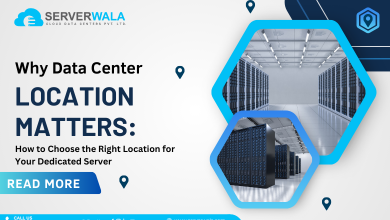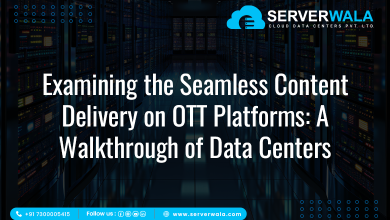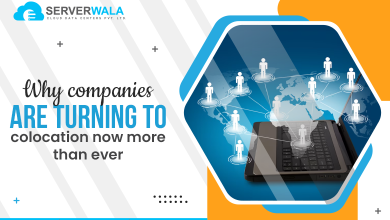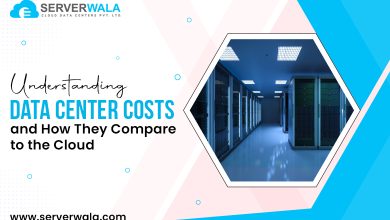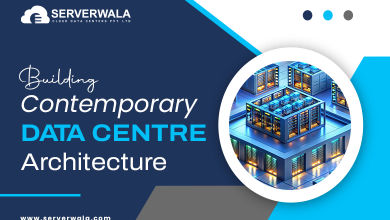What are Edge Data Centers? (Complete Guide)
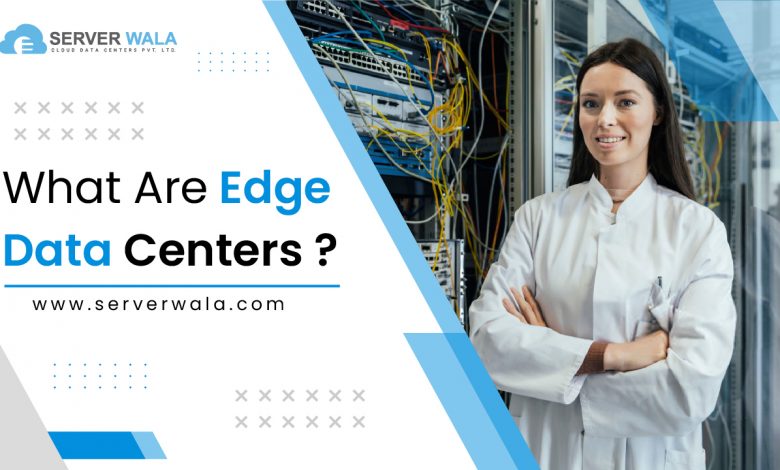
Overview
The new innovations in technology have pushed people to examine new and still developing opportunities that hopefully assist them to lead better lives.
The data center sector is also no stranger to these advancements, and one such data center that has been receiving a lot of interest lately is Edge data centers. With the growing need for investment and still in its early stages, Edge data center services offer a lot of advantages and promises to a wide range of individuals. As opposed to the core data center, an edge data center will be located more closely to its end users. They are small yet powerful in delivering results and capable of processing data with low latency when compared with core data centers.
In this detailed guide, you will be introduced to edge data centers, their various types, and most importantly their use cases to help you understand the significance of this technology.
What is an Edge Data Center?
There is no straightforward way to answer this but to state the obvious, which is, that edge computing techniques allow businesses to maintain lower latency rates and also improve user experiences. An edge data center service can achieve these high-performance tasks by processing data and services to users located in nearby locations.
Edge data center definition can be easily defined as a facility closely located to the base of customers that will be receiving their services. Such end users will receive cloud computing services in a more efficient method by the use of resources and cached materials authorized by edge data centers. In most instances, edge data centres are typically connected to a large data center or several other data centers to be able to function appropriately.
Key Reasons Why We Need Edge Data Centers?
Latency as a challenge has troubled data center managers for a long time. It has been a concerning factor in technological advances, mainly big data, cloud, and streaming solutions, or the Internet of things, in recent times. Currently, in this fast-paced world and new economies, business owners know their end users demand latency-free experience. Services, applications, and important data need to be available at times, anywhere. Globally, with the convenience of the internet and other innovations, latency has become a non-negotiable prospect. To rectify some issues and resolve this concern, businesses from a wide plethora of industries are establishing edge data centers as an improved solution that can offer elevated performance. It can boost the data processing rate and end-user experience to newer heights.
Different types of data center experts will explain edge data centers differently, mostly because it all depends on the professions, sectors, or objectives. Another factor that needs consideration for this fact would be that edge data centers are still a new evolving trend that needs to be backed up with some experience to stand tall. Regardless of different opinions, no one denies its key advantages and usefulness, here are some key reasons presented to help you understand why it has become essential to take notice of edge data centers at this moment.
The Benefit of Being Local-
The primary usefulness of edge core data centers rests upon the advantage of being established in the same or a closeby location to the people it’s meant to serve. This also helps in faster data processing and rapid functioning of services. Business owners tend to favor this motive over the other because the objective to satisfy end-user expectations is number one.
Smaller-
Edge data center components are much easier to house in comparison to core data centers. These components are similar to the core data center however; the position of housing or the space utilized to house these parts is much smaller in space. This reasoning justifies its appeal to business owners who are looking for affordable ways to maintain their data center services on a budget.
A piece of a larger development section-
Central enterprise data centers incorporate many intricate development parts that work for their smooth operation. Edge data center is a piece of that larger development that is included in the process of delivering complex network services for the primary enterprise. Most business owners favor this alternative by knowing that, all of its solutions and services are being backed by a reliable source. Hence the end product will deliver dependable performance for their end users.
Mission critical focus-
Data center edge computing solutions specialize in providing services for mission-critical data and processing powers to applications/software that are placed for processing-based assistance. Many different types of businesses today engage in complicated networking to deliver high standards of service to their end users. And for delivering such services they need the contribution of elevated levels of data processing, faster speed, and a low latency network. So to support mission-critical apps and data, edge data centers offer varied options that can help them achieve their desired goals effortlessly.
Types of Edge Data Centers
Edge data centers are a suitable option for business owners searching for new advanced routes to boost their performance. However, there are different types of edge data centers and you must understand the key differences between each kind. To better illustrate the range of edge data centers, this categorization will assist you in differentiating them.
Edge data centers come in various forms, including:
1. On-premise edge
- Tower edge
- Outer edge
- Inner edge
2. Regional
3. Hyper-scale
On-premises
Many organizations’ facilities have data centers housed within their parameters and essentially controlled by their IT department. On-premises data centers are a category of data centers that fit this description. When you research a bit further into its origin, you will discover that these kinds of data centers have been around for some time now. Also, the organization’s primary goal of this movement was to control, handle, and operate the center by itself. This boosted the secure aspect of data processing while being operated on a private cloud offering flexible services. You must know this, when you have an adjustable or flexible solution within your control, the possibilities of security rise instantly. The on-premise data centers offered flexible adaptations to the business owners’ wide range of needs for their mission-critical applications.
On-premise edge is somewhat different in its approach. Within this context, we are referring to the micro data centers, closer to the client’s location and it has various methods available to achieve this. We cannot observe edge getting utilized, sometimes as one or two servers. For example, a rack located in the on-premise center or perhaps a mini-data center section that can hold one rack. The key intention behind this is to be as close er as practical to the end user location. Therefore, latency gets lowered with a 2-5 ms roundtrip rate.
Tower edge
Representing the final step for most telecommunication networks, Towers are positioned within the last mile of end users to offer the best level of service. A particular region can have several cities that are highly populated and further, the consumption of technology can also be estimated in high numbers. Applications such as cloud gaming, connected vehicles or AR/VR can be used by people every day across the region. Setting up a tower is a much more cost-effective approach to accommodate this demand, as establishing larger data centers in a city can be costly and limited in choice. Also, they serve the purpose of containing two key elements, power, and communication, both needed for the functioning of a data center.
This is a great possibility that can be used as an advantage by tower companies and cell networks controlling their towers. Carrying over computing services to users of next generations apps up to the point of the last mile is challenging. However, it is not impossible, the needed latency can be achieved. Besides, there are some entities such as carriers using different techniques by virtualizing RAN. This can boost the investment in facilities similar to data centers at towers, possibly even consolidating some network devices at certain locations. It has been proven that IT infrastructure can be co-located for edge applications, maximizing its chances for a great investment. It can be used as a modern revenue system by offering edge cloud computing solutions.
Outer edge
As a convention standard, this is where a region’s telephone lines converge and are electronically routed to deliver the best results. Considered the mobile networks’ outermost limit, several central offices can be located across the region, privately owned by telecommunications networks. Typically used to server fixed line connections, they are now being utilized and transformed for the usefulness of more digital facilities by telecommunications networks. But this does leave a substantial unoccupied area, hence making them an excellent option for Edge datacenter for cloud computing. By establishing central offices close to the location of end users, the data centers can achieve a latency of 30ms. Still, the placement of central offices needs to be between RAN and the core data center to deliver high-performance outcomes.
Inner edge
Much similar to the outer edge (that is, the central office) privately held by telecommunications networks, the mobile core is generally referred to as the inner edge belonging to the mobile network. Depending on the location and what kind of service is required, a broad range of solutions is delivered to the users connected to the access network from interfacing nodes. The proximity element to the large cities needs to be taken into consideration along with high connectivity points, as these locations are indeed fantastic selections for edge data centers delivering cloud computing. The size of inner edge data centers is larger than the outer edge because it is more comparable to a conventional data center in its characteristics.
Regional
These types of edge data centers are among the most popular ones. Regional data centers can be dubbed edge colocation data centers, usually established closer to a major city. The population of such cities needs to be high in numbers because regional edge data centers can host various ranges of users and applications within their capacity. It has been proven to be useful to several clients such as major corporations, cloud services providers, or even web developers, as they can rent particular cabinets with server racks in the data centers. Regional edge data centers also offer services for entire cage cabinets or the complete data center to be occupied by one entity.
When you compare it to other the other types of edge data centers for instance hyper-scale you will find that, the located location can reach a latency of 50 milliseconds as an improved outcome for users. However, it is important to note that this can heavily depend on the type of market or sector, as the latency rate can differ from market to market. Regardless of changes in rates, still, it is still favorable to many users because of its high-performance value, the latency driven by highly centralized networks is the motivation for further investment in these types of data centers. A hyper-scale data center will be inapt in contrast to regional data centers when there are tier 2 locations, populated with residents or users in a major city of Chicago, USA.
Besides, regional data centers are even less costly than on-premise and tower colocation data centers. Because a larger part of its expense can be handled with innovative technologies, caused by lowering the added cost of operation, and maintenance expenses with cooling systems and high power sources. A local Internet exchange can be used to host many colocation facilities. Even some carriers operate their private data with the technique of private peering at regional data centers.
Currently, when we observe the investment cycle on scalable edge data centers, regional data centers include the bigger part of that investment. Also, this interest and number of investments will be increasing in the coming years as we can watch the rise of the unitization of these types of data centers across the board.
Hyper-scale
When data centers are not on edge but start where the edge ends, are commonly termed hyper-scale data centers. These massive facilities are considered to be huge having more than 5000 servers and ten thousand sq. feet of space. Often they can manage thousands of servers at once, located in remote and isolated areas. The name hyper scale is used to define the capability of a system to scale in response to high demand. Most of the market’s big players such as Amazon, Google, and Microsoft use its services. And because of its larger size, it is not feasible to lease racks as part of a colocation facility by some vendors using a small percentage of services. Rather than using a small section, you must utilize the services in its whole setup, relying on the control of this large data center for individual use. This alternative cannot be cost-effective for users who work on smaller budgets or small-scale services for their end users
Top Use Cases of Edge Data Centers
Did you know currently, only 10% of data is being processed and created out of a centralized data center or cloud? However, it has been estimated that this percentage will be going to expand by 75% in 2025.
When there is such a high estimation of the use of these types of services, it is important to recognize the sectors or services it will influence the most. Here are some use cases of edge data center solutions that can assist you in grasping the rise in popularity of edge computing services.
Autonomous automobiles
The rise of self-driving cars and vehicles has been growing for some time now. As a convenient and much safer way of traveling, these types of automobiles can collect, communicate, and process data rapidly. This type of high data processing demands the support of edge data centers for its apt utilization.
Smart or digital cities
With the growth and development of the internet in our world, city officials are finding new ways to implement technology to help the growing standards of its residents. The assistance of real-time data collection and assessments of infrastructure, utilities, or even transport facilities can be done with the strong backing of edge data centers effortlessly.
Manufacturing
Organizations of all scopes and sizes are interested in advancing their production and manufacturing procedures. With the utilization of edge data center services, it is practical to boost some of the maintenance and power consumption operations in these settings. By providing IoT devices for large data storage and computation functions, the expense can be lowered substantially.
Financial organizations
Many financial institutions globally need high-tech services to implement their highly essential responsibilities. Most trade-based algorithms can be executed more quickly for high-volume banks if they are supported by edge data centers. The profit margins can also be boosted when there is a high data processing method enforced to uplift current regular procedures.
Telemedicine
Much like financial institutions, most medical intuitions also need the beneficial aspect of edge data centers. Patients’ key and private information need to be gathered in an efficient process so that its integrity and reliability remain secure. Many fitness brands can also use these services to boost the oversight over health monitoring systems accessed by professionals to give proper recommendations to their patients.
Augmented reality
Many retail establishments are executing augmented reality-based techniques to better serve their customers. This type of service needs real-time data processing to make the purchasing experience more favorable and impressive. Edge data centers can support high-end data processing and collection with great security ratios while delivering strong results in an instant.
Virtual assistants with AI
Whether we prefer to embrace it or not, AI systems are the new big thing. There are now several kinds of virtual assistance used in home and residential settings powered by AI that need higher processing solutions. To elevate the performance at a much more local level and to lower latency, edge data centers can be used as a suitable solution.
Video surveillance
Security of all kinds is paramount for individuals, particularly if they are concerned about major wrongdoing in their location. Video surveillance and monitoring is indeed an option that is enforced by many to feel protected at all times. However, these types of solutions demand massive volumes of data collection and analysis, especially nowadays with the implementation of facial recognition or motion detection tools. Edge data centers will ease the heavy world load by such solutions to properly offer great services at a localized establishment.
Gaming
The global gaming trend has been growing in numbers. Due to the high demand of players wanting low latency, boosted bandwidth, and local matchmaking, the gaming industry is looking for solid foundations that can easily benefit them at reasonable costs locally. Edge data centers offer great performance results for cloud gaming services that recently have been favored as the go-to option for many individuals.
Providing content
We have mentioned every possible sector in these above-mentioned points, but for this last use case, we would like to highlight the key importance of end users receiving data at a much higher speed. When you want content delivery to stay within milliseconds, access to important content can be delivered by edge data centers. Also, your data and content will be cached, hence delivering low latency and much smoother performance in your day-to-day services.
Summing Up
In this detailed guide, we have attempted to introduce you to the edge data centers, hopefully, by this end; you have a broader understating of its uses and efficiency in terms of delivering high-performance service.
Lastly, we would again like to emphasize that edge computing data centers are smaller facilities that can offer local end users cloud-based computing services and resources. This can be accomplished by caching data and content to best suit the end user’s request for low latency. For processing data, lowering the latency rate, and boosting response times, these types of data centers enforce the functioning of effective infrastructure and technology.
The different types of edge computing data centers have different kinds of utilization purposes, serving many users with their diverse needs. Since edge data centers are established for processing massive data volumes, they serve as the foundation of major use cases locally. Being stationed more closely to the end users is one of the prime advantages of edge computing data centers in delivering high-speed services with lowered latency rates.
It has been estimated that in the next 5 years, the popularity and the demand for more edge data centers will grow. As more people rely on the status of IoT device usage, the benefits of edge data centers cannot be ignored for delivering high resources. We envision with this change and movement you and most end users will get to profit the most with high-quality performance and affordable services for multiple uses.

